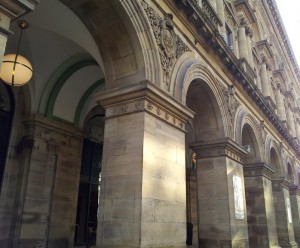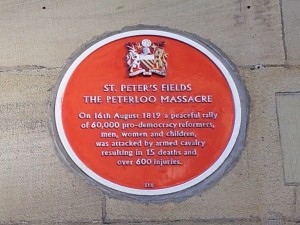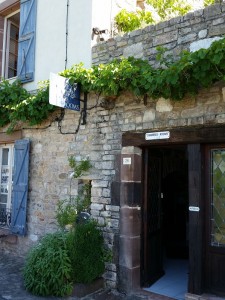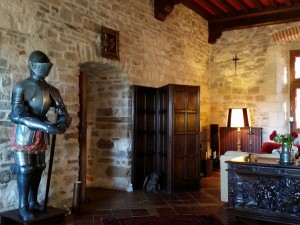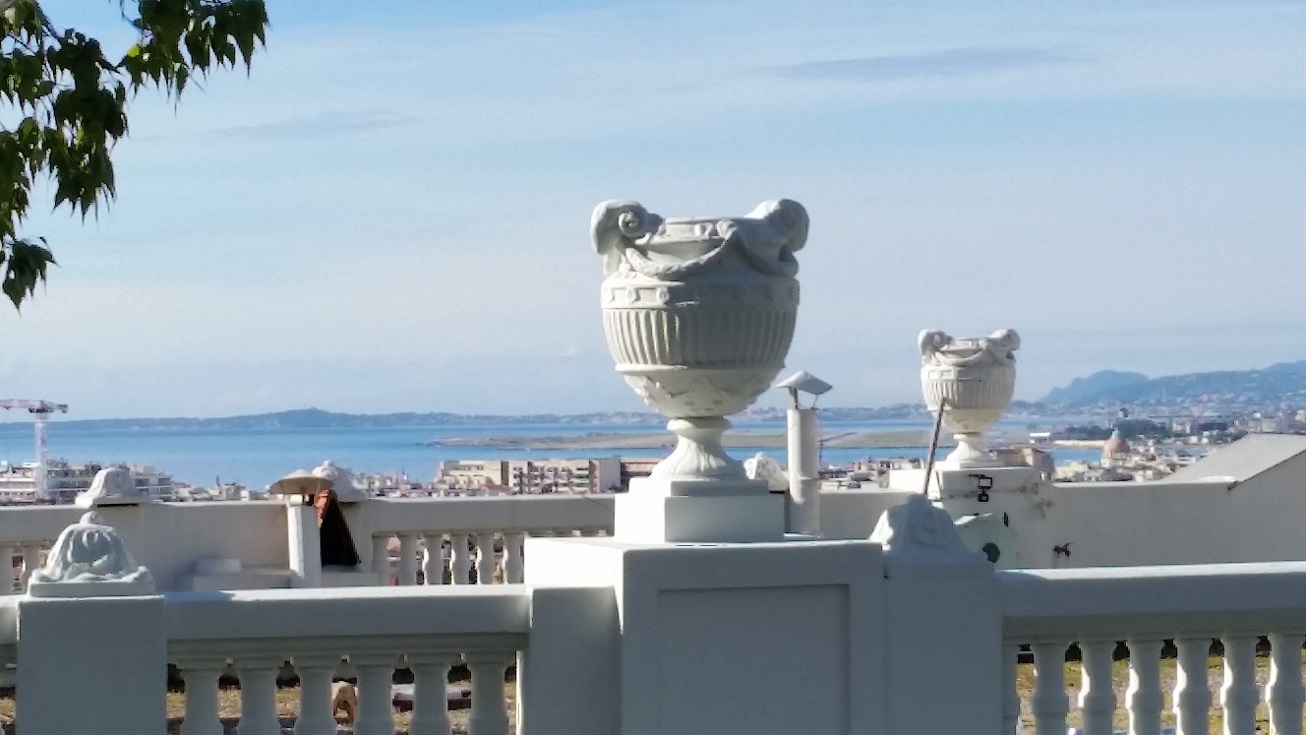
This month’s blog gets passionate about a city and a hotel.
Readers may remember I have a bit of a thing for the delights of hotel-dwelling. In July 2015 I quoted Vladimir Nabokov, who lived for 16 years in the Montreux Palace Hotel in Switzerland: ‘It avoids the nuisance of private ownership,’ he said. If by ‘nuisance,’ Vladimir was referring to menu-planning, shopping, cooking, washing up, floor-mopping, bed-making, scrubbing the shower tiles and such-like, I am right there with him. (Although such nuisances were probably Véra’s cross to bear as they hadn’t invented househusbands in those days.)
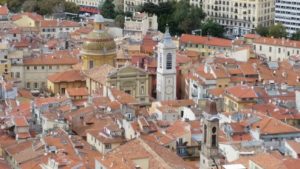
At the end of February, leaving behind our own nuisances, the MDM and I headed off to check out the historic city of Nizza la Bella, as it’s known in the local language, Niçois or Nissart (a variety of Occitan), and the pleasures of hotel-life. We were hoping to find another establishment to add to our list of twinkling stunners, places where, in addition to luxurious amenities, first class service, and maximum pampering, there’s an extra special ‘wow’ factor making for a truly memorable hotel.
In the past I’ve got passionate about the Radisson Blu Edwardian in Manchester (iconic Free Trade Hall, Halle orchestra, Disraeli, Charles Dickens, the Manchester suffragettes) and La Maison Bakéa in Cordes-sur-Ciel (13th century stones, suits of armour, galleried courtyards and the ghosts of massacred Cathars). Closer to home and heart is the Hôtel du Grand Balcon in Toulouse (dashing French aviation pioneers, the shade of Saint-Exupéry and the view across the place du Capitole). And of course, l’Hôtel du Palais in Biarritz has had frequent mentions – love-gift of Napoleon III to his Empress, dazzling Belle Epoque magnificence and views across ‘the queen of beaches’ (not to mention the setting for a scene or two in those French Summer Novels 😉 ).
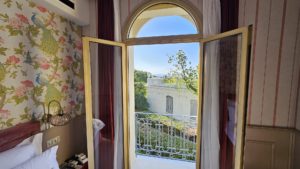
This time we were off to another ‘palais’– l’ Hôtel Petit Palais, a small hotel in a former private villa also dating from the aptly-named Belle Epoque. Leaving a sunny Tarn behind, we stepped off the plane in Nice to a thorough drenching. The rain and wind buffeting the coast had forced the cancellation of the closing ceremony of the city’s famous Carnival. Happily, the weather picked up, allowing us to explore the 2nd most visited tourist destination in France after Paris. Its unique setting, between mountains and sea, the curve of its beautiful ‘Bay of Angels’, rimmed by the 7-kilometre promenade des Anglais, the imposing silhouette of the Colline du Château, on whose summit stood the medieval town – all have famously inspired artists.

Before I’d even set foot in the city, Nice felt familiar thanks to the paintings of Berthe Morisot, Raoul Dufy, Chagall and of course Matisse, whose view across the sweep of the bay from his windows at Hôtel de la Mediterranée and Le Beau Rivage was a constant source of inspiration. He describes his amazement at the colour of the sea: ‘an unearthly radiance…the blue of sapphires, of the peacock’s wing, an Alpine glacier and the kingfisher… it gleams, it is translucent, its shines as though lit up from below.’
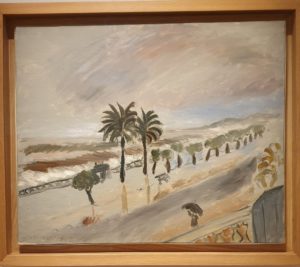
Matisse came to Nice in 1917 to recover from a bout of bronchitis. The weather was so dismal he nearly headed back to Issy-Les-Moulineaux. His painting, Tempête à Nice, which we saw in the Matisse Museum, is more Stygian-gloom than unearthly radiance, but fortunately for him, and for art lovers all round the world, the sun came out, the colours changed, and Matisse stayed on until his death in 1954, leaving us with those paintings.
There’s something endlessly fascinating about windows in art, symbolic openings on to other worlds and universes.
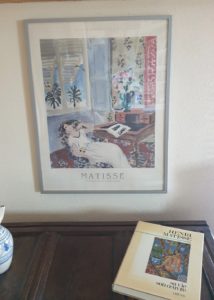

In The Cowshed, two paintings of Nice hang on the walls. One, a reproduction of Interieur à Nice, 1922, exudes an atmosphere of tranquillity and voluptuous farniente, with Mme Matisse taking a siesta on against a background of louvred ‘persienne’ shutters opening on to palm trees. The other, an original (fanfare!) is the work of brilliant artist Gordon Seward, and features those shutters once again, pink this time- Persiennes roses à Nice, 2002.
A week isn’t long to get to know a great city, but we packed in as much as possible, trying to get a feel of what it was like to be a genuine Nissard, to live in this buzzing vibrant place where the inhabitants have a strong sense of community and pride in their local culture and rich history. Ever since 1861, a resounding ‘cannon shot’ is fired from the top of the hill at noon. According to legend, this custom is in memory of Sir Thomas Coventry who used it as a reminder to his wife to get the lunch served for himself and his men (no househusbands in those days either).

The exception to this tradition occurs on the Fête Nationale, July 14th, a stark reminder of the day on which that sense of community was shattered in the Islamic terrorist attack of 2016; a poignant memorial to the 86 victims stands in the grounds of the Villa Massena.
Our downtown flâneries averaged 5 to 6 kilometres per day, so we were ready for the reward that awaited every evening, 100 or so metres above the coast on the hill of Cimiez, another world, another Nice.
Up here are no clanging trams, hooting traffic, and roaring motorbikes. The contrast with the effervescence of the city below is dramatic. To wind your way through these tranquil narrow lanes is to step back in time, to the glittering era of the Belle Epoque. Sumptuous mansions sit behind wrought iron gates in verdant parks full of birdsong. It’s a tree-lovers paradise – cypresses, palms, green oaks, ancient olives, magnolias, towering pines. Lemon and orange blossom time was over, but branches lit up with bright globes of oranges overhung the walls, occasionally dropping a ripe gift at your feet.
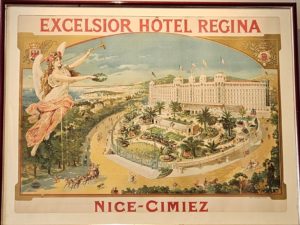
When looking for a hotel back in November we’d foregone those in the centre, choosing instead to follow in the footsteps of Queen Victoria. Those royals knew a good thing when they saw it. Victoria had already spent time at the Hôtel du Palais in Biarritz in the early 1890s; in 1897 she and her fleet of staff took up residence in a hotel specially built for her in Cimiez- the Excelsior Regina Palace. The vast 200-room edifice was built in just 18 months, which shows what can be done given the right (royal?) motivation. Here, Her Majesty could gaze down at the panorama of the coast, or take a turn in the park across the road where, today, the restored ruins of the 1st century Roman arena lie close to the Musée Matisse. When the Regina was sold and turned into appartments, Matisse bought three of them, continuing to work in this vast space until the end of his life. He and his wife are buried in the nearby cemetery.
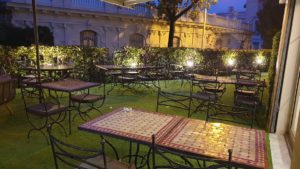
Slightly lower down the hill from this majestic edifice is Le Petit Palais. We arrived that first day, wet, cold, and a bit dispirited, but the welcome was just as warm as it had been cracked up to be in the glowing reviews. An excellent margarita whipped up by Kevin put colour in our cheeks. We quickly succumbed to the hotel’s charm, its soothing décor of pastels contrasting with exotic wall papers, the tranquil garden oasis outside, the unhurried pace – all induced a feeling of relaxation and well-being.
Each evening, after our daily hike, we would retire to our room with its view across the rooftops to the bay and the coastline. Wrapped in fluffy bathrobes we would recline on the cloud-soft mattress, like Madame Matisse taking her siesta; as we drifted off to sleep, painted bluebirds and peacocks spread protective wings (and tails) above our heads.
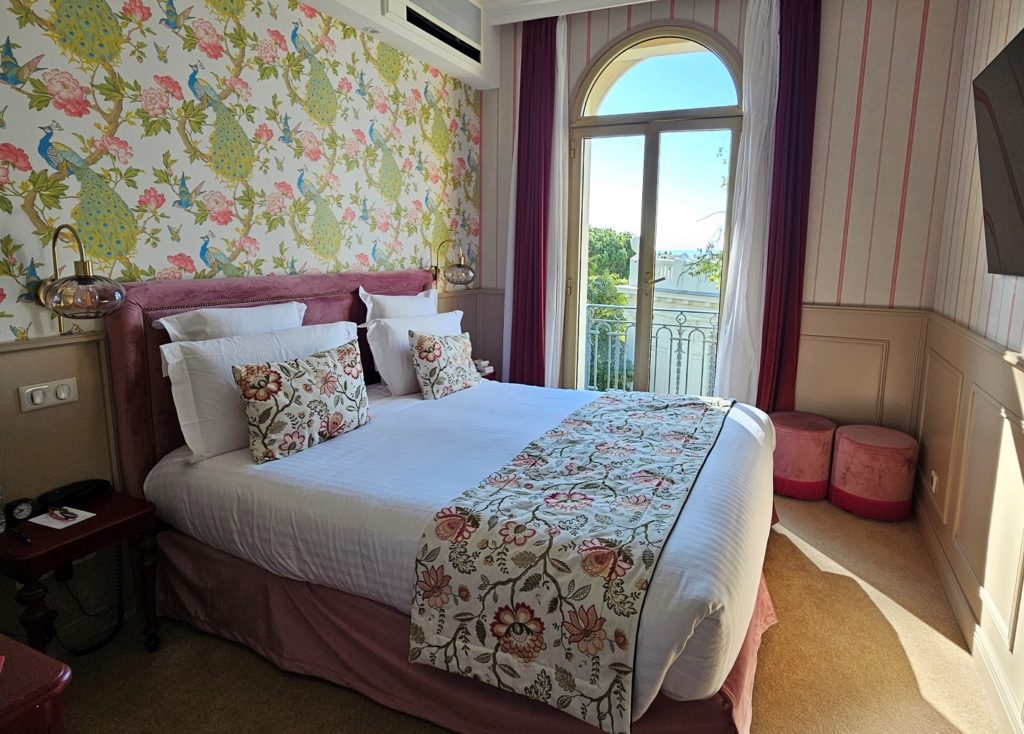
But perhaps most charming of all was the human touch. Many reviews mention the ‘family atmosphere,’ generated through the warmth and conviviality of the personnel. And indeed, getting to know Philippe, Daniel and Kevin on the front desk, Christina and Emmanuelle in charge of the dining room, we had the impression of being privileged guests at the home of long-lost relatives (the cultured, aristocratic branch) where hospitality and l’art de vivre were the mots du jour.
It’s impossible to spend time in Nice without becoming aware of its Italian roots. Through its geographical position, it was fated to be one of those territories disputed by different kingdoms and dynasties. Though it became French in 1860, there was much local resistance, encouraged by famous general and son of the city, Giuseppe Garibaldi, but such protests were finally quashed by French troops sent in to put down a three-day uprising in February 1871 – the ‘Niçard Vespers’.
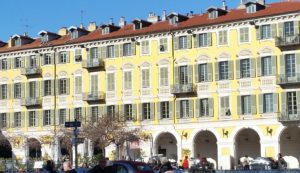
Today, though, the Italian connection is still much in evidence. The border is a mere 42 kilometres distant; the architecture in the two main squares, Garibaldi and Massena, bears an unmistakable Italian stamp with its red, yellow and ochre façades. Despite the bustle, the downtown vibe is pretty relaxed; on the café terraces, a popular drink is Aperol Spritz, a prosecco-based aperitive, more salute than santé. It all makes for an irresistible blend – ‘the sweet life’ – or as they say it so well in both Italian and French, la douceur de vivre, la dolce vita…
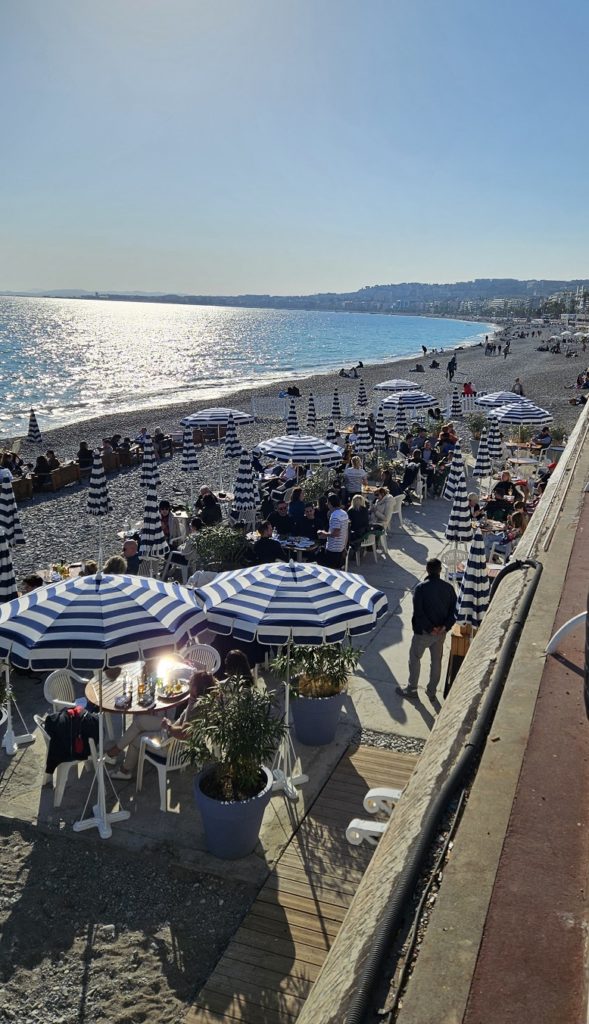
Copyright Laurette Long 2023
